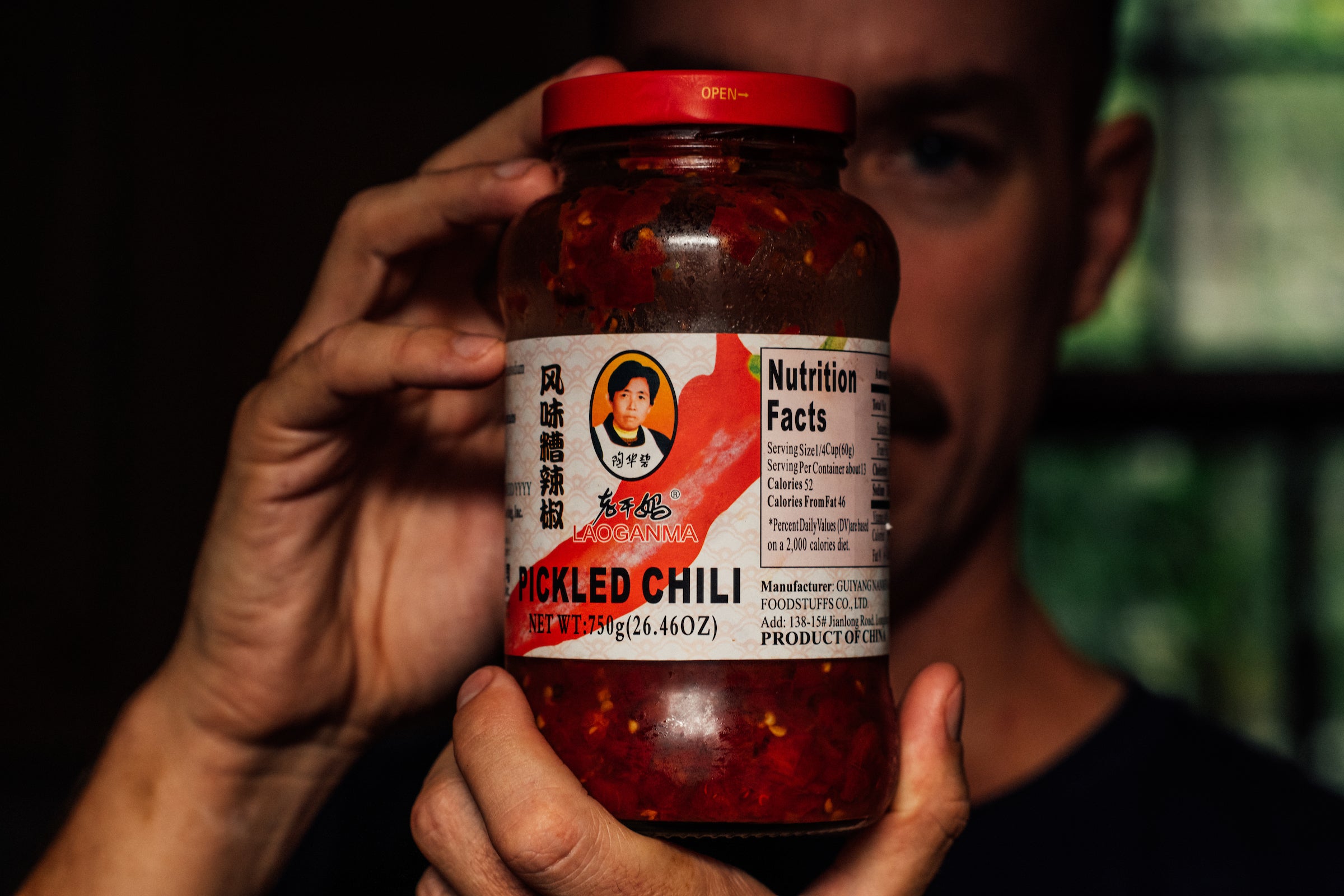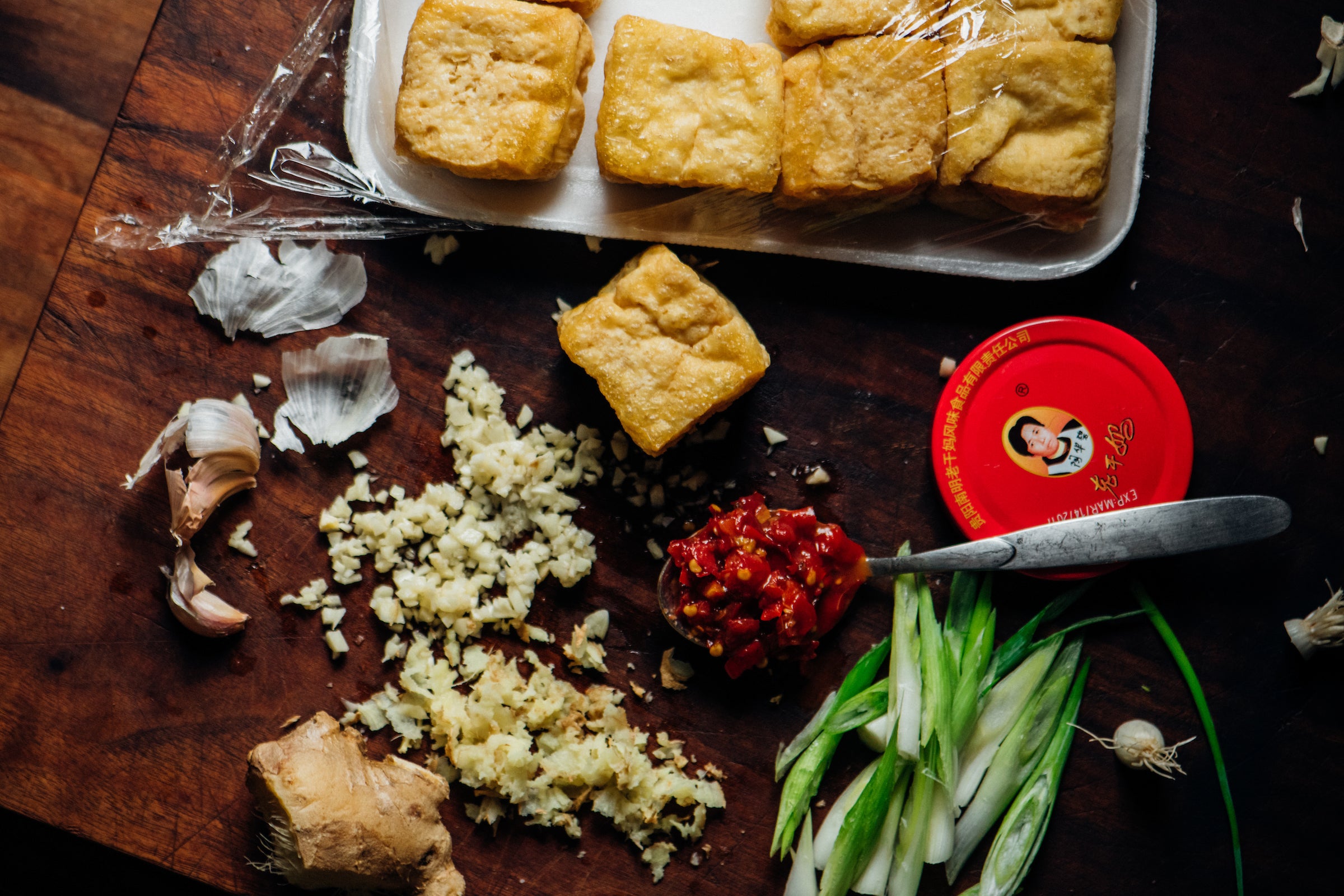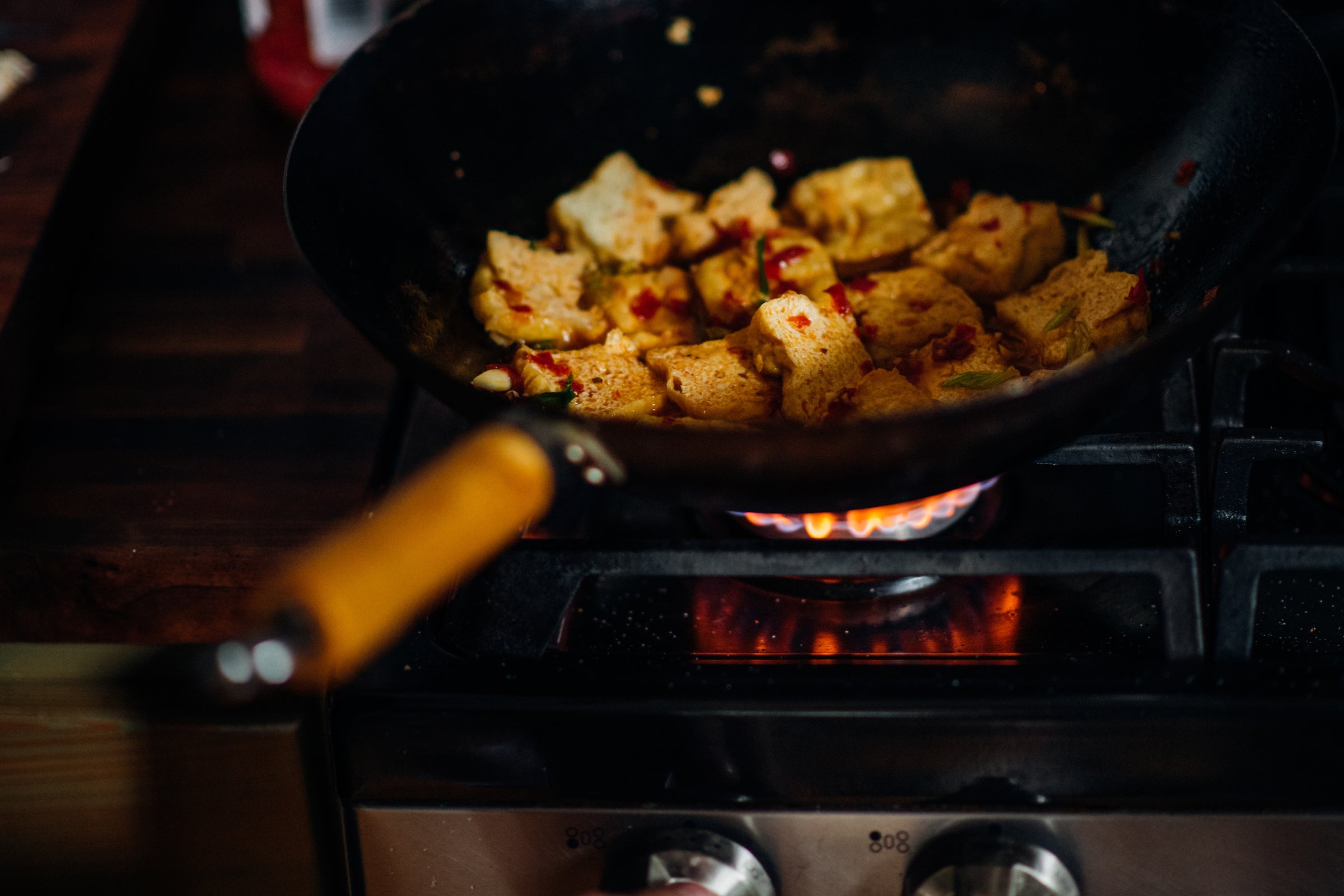
It transforms the bean curd into something completely, magically different. Your sauces will thank you, too.
Say the word “pantry” and you likely think of this: a cupboard. Hinged doors. Meals in waiting, stored—sometimes neatly, sometimes not—at room temperature.
If it is my pantry, you see a motley collection of ingredients. A long rectangle of dried spaghetti. Fermented black soybeans. A can of coconut milk. Poha, flattened rice from India. A bottle of black vinegar. Each poised to assist with both planned and impromptu cooking. It is liberating to have the makings of a meal standing by. Imagine if you could amplify that promise. Well, you can. I think it is time the concept of a well-fortified home pantry slides into a much cooler zone of the kitchen: the freezer.
My pantry-minded relationship with my freezer began as a one-meal stand: a bag of frozen peas cast into a pan of sautéed potatoes that had been seasoned with cumin and green chile. Then, on the rare times I cooked stock, I started simmering extra so there would be freezer spares. Now, my subzero provisions are an essential part of my cooking methodology. I pressurize twice the amount of dried beans in my Instant Pot. Half go in the refrigerator; the other into wintry hibernation. An uncooked slab of sliced bacon; Sun Noodle ramen noodles; watercress compound butter; an array of dried chiles, some, ahem, smuggled from Oaxaca: All of these are lazing in my freezer now, a battery of potentials readied at the starting line. My favored, my dark horse, is fried tofu.
My tofu is produced by a local tofu maker in Westwego, across the Mississippi River from New Orleans, where I live. Each package comprises six two-inch-wide blocks set on a styrofoam tray and wrapped in plastic. Nothing fancy: This type of fried tofu is available in the refrigerated section of nearly every Asian supermarket. Fresh fried tofu is extraordinary when stewed. It absorbs flavor well without losing its bouncy texture. Time in the freezer transforms fried tofu. The cell walls expand, turning the blocks dense and chewy after defrosting. Denser and chewier than they already were. A modification all the more optimal for sponging whatever sauce the tofu happens to be cooked in.
Oh, those sauce options! I have cut the defrosted tofu into triangles, clenched the pieces to rid them of surplus water, then stir-fried the tofu with lemongrass, bird’s eye chiles, green beans, and red bell pepper before adding coconut milk and fish sauce, all according to a stellar Southern Vietnamese recipe from Andrea Nguyen’s indispensable Asian Tofu. I have simmered the blocks with soy sauce and dashi, that backbone stock of so much of Japanese cuisine. The possibilities are vast. What matters is that the sauce is bold, layered and deep with flavor. You want a sauce that resonates. Most often these days, I cook my tofu “fish-fragrant style,” which is a traditional Sichuanese combination of garlic, ginger, scallions, and pickled chiles used to season, as the name intimates, fish.
I first learned to cook fried tofu this way from a recipe in Fuchsia Dunlop’s Land of Plenty. The pickled chile paste that the recipe mentions threw me at first. Then, after I bought a jar of Lao Gan Ma brand Pickled Chili at a nearby market, the condiment became a fixture. There are a variety of pickled chile pastes available, but the best are the same, in one way: Chopped chiles and salt, plus an MSG blessing and a single preservative, are the only ingredients. The pastes are sharp, tangy, and hot, in equal measure, with demonstrable bits of chile, more rough puree then paste, and last in the fridge forever seemingly.
To make fish-fragrant fried tofu, you heat oil in a wok or large skillet and stir-fry chopped garlic and ginger along with long slivers of scallion and a wallop of pickled chile paste. The air goes pungent, and the oil becomes vermilion. You then add slices of defrosted tofu (squeezed of excess water), chicken stock, soy sauce, sugar, and salt. The lot simmers until all the liquid has disappeared and only a red oil slick remains. The three-part kick of the garlic, ginger, and scallions, along with the fermented funk and fire of the pickled chiles, also endure, burrowed into the framework of the tofu itself.
Eat it straight away. Or consume some immediately and eat the rest cold from the refrigerator. As you do so, bask in the power of low temperatures to expand your pantry, making it bigger, more versatile, more conditioned to do right by you.
A Kitchen in New Orleans. Many years of eating, cooking, and writing about food have left Scott Hocker with many stories to tell. In this occasional column, he re-creates a dish tied to a distant, or sometimes recent, food memory.


